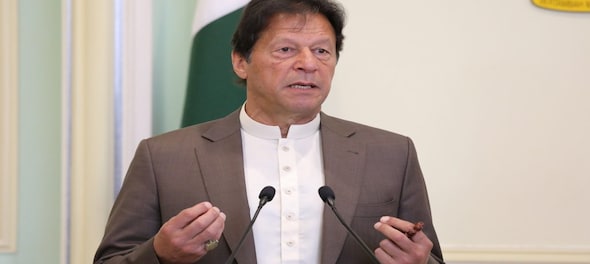
Pakistan is battling a deep economic crisis and requires a gross external funding of $51.6 billion over a period of two years between 2021 and 2023 to fulfil its requirements.
According to news reports, Pakistan's gross external financing demand stands at $23.6 billion in 2021-22 and $28 billion in 2022-23 despite conservative estimates by the International Monetary Fund (IMF).
How will Pakistan fight the crisis?
The Pakistan government is trying to reach an agreement with the IMF in Washington to bridge the gap on external funding requirements.
Without IMF’s support under the existing $6 billion Extended Fund Facility (EFF), Pakistan’s massive gross external financing will be at risk, The News International, one of the largest English dailies in Pakistan, reported.
The World Bank and Asian Development Bank have already suspended loan programmes to the country. But the two multilateral creditors will continue to disburse project loans, which are likely to be very low given Pakistan’s capacity to implement projects.
What IMF wants
The IMF has asked Pakistan to remove distortions in the taxing system and align its varied GST exemptions and rates with the standard rate of 17 percent.
Pakistan is, however, opposed to the idea as it believes the move will further marginalise the agriculture sector.
World Bank report in October
On October 11, the World Bank, in its International Debt Statistics 2022 report, said Pakistan was one of the top 10 countries with the largest external debt. The country was eligible for the Debt Service Suspension Initiative (DSSI) as a result of the impact of the COVID-19 pandemic.
The report also said Pakistan's foreign debt rose 8 percent in 2020 to $108.53 billion from $100.83 billion in 2019. Net inflows from private lenders increased by 15 percent during the period to $14 billion, but mostly represented rollovers and extension of new credits by commercial banks under IMF programmes.
Foreign direct investment inflows to Pakistan fell 5 percent from the previous year to $1.9 billion in 2020. FDI inflows were mainly in power generation and the telecom sector from British and Chinese investors.
Credit rating agencies
Credit rating agencies are likely to further lower Pakistan’s ratings, making it difficult for the cash-strapped country to raise funds through international bonds issue, The News International reported.
(Edited by : Shoma Bhattacharjee)
Check out our in-depth Market Coverage, Business News & get real-time Stock Market Updates on CNBC-TV18. Also, Watch our channels CNBC-TV18, CNBC Awaaz and CNBC Bajar Live on-the-go!


AAP protest today: Delhi traffic police issues traffic advisory, security at BJP headquarters beefed up
May 19, 2024 11:26 AM
BJP is planning to ban RSS, says Shiv Sena (UBT) chief Uddhav Thackeray
May 18, 2024 8:01 PM
Punjab Lok Sabha elections: Complete list of Congress candidates
May 18, 2024 4:08 PM
Punjab Lok Sabha elections: Check full list of AAP candidates and constituencies
May 18, 2024 12:59 PM

